Fake Turquoise is almost anywhere!
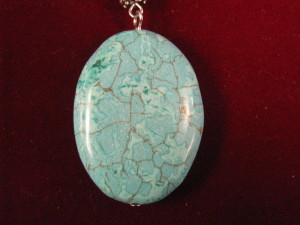
- Fake turquoise often has white spots, chips in the stone that appear white, and if the nuggets have drill holes: white color present inside the holes!
Howlite Cross placed on purse.
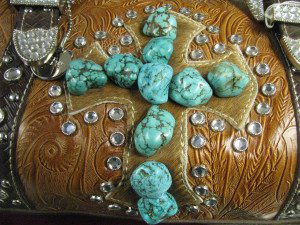
- TIP: Rub your fingernail along the “cracks”. “Cracks” are artificial and have no variance or deviation in feel from the rest of the sample, as real examples would!
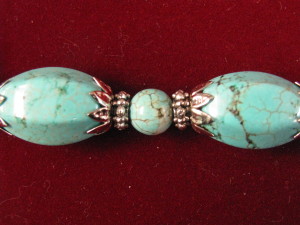
Rubbing your fingernail on the matrix reveals a “smooth” surface
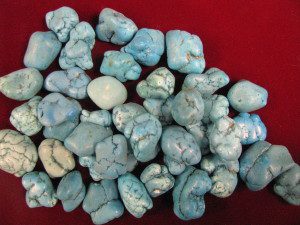
Most noteworthy, the preceding examples are of fake turquoise. First of all, Howlite is a stone that is naturally white, but can be easily dyed any color. Secondly, blue dye makes Howlite resemble real turquoise. In addition, a good way to identify Howlite is that if you drill it, the hole will be the color white inside.
Another example above of Howlite has a blue stain to resemble “real” turquoise. Furthermore, to further the deception, the crevasses have a black stain.
In addition, ceramic beads may look like “real” turquoise. As a result, notice the irregular color in the round center bead? Some “fake” turquoise is easier to spot then other pieces. Notice the fake matrix and dye pooling?
Furthermore, “Fake” shows simulated matrix which is perfectly smooth to the touch. If you run your fingernail over the “fake” matrix and you won’t feel any ridges. In the case of the real thing, your finger nail will catch in the crevasses.
Resin and turquoise powder are put together in this reconstitute turquoise nugget.
Block
“Block turquoise” is a mixture of chemicals, plastic resin, and dyes that produce blocks. Consequently, this type of product contains no turquoise. Iron pyrite is sometimes in use as “matrix.”
Color Enhanced
“Color enhanced” simply means that it has a dye treatment.
Enhanced
“Enhanced” refers to medium-grade turquoise that has a treatment by a process that penetrates and hardens with vaporized quartz. As a result, this process will not work on low-grade “chalk.” Most noteworthy, the process will only work on relatively hard stone. Consequently, this enhancement is commonly undetectable using normal testing methods.
Imitation and Simulated
Stones such as howlite, magnesite and dolomite may contain dye to look like turquoise. Most noteworthy, glass, plastic, ceramic and polymer clay may also be in use.
Reconstituted
“Reconstituted” consists of small pieces of turquoise chalk powder mixed with dye and plastic binder. Dealers refer to this type of turquoise as “block.” “Reconstitute” is another label for “fake.”
Stabilized
“Stabilized” is treated with a plastic resin to make it harder. In addition, stabilizing allows genuine, but lower-grade turquoise, to be made into jewelry. Consequently, even when a stone goes through stabilization, its color can change over time by human oils, soap and skin lotion.
Wax-treated
Finally, wax is sometimes in use, instead of plastic resin, is used for stabilization. Most noteworthy, Chinese turquoise often has wax impregnation. As a result, the wax typically only effects the surface of the stone.
Real Turquoise 1990 – 2025 © Schannep Ventures L.L.C. ALL RIGHTS RESERVED
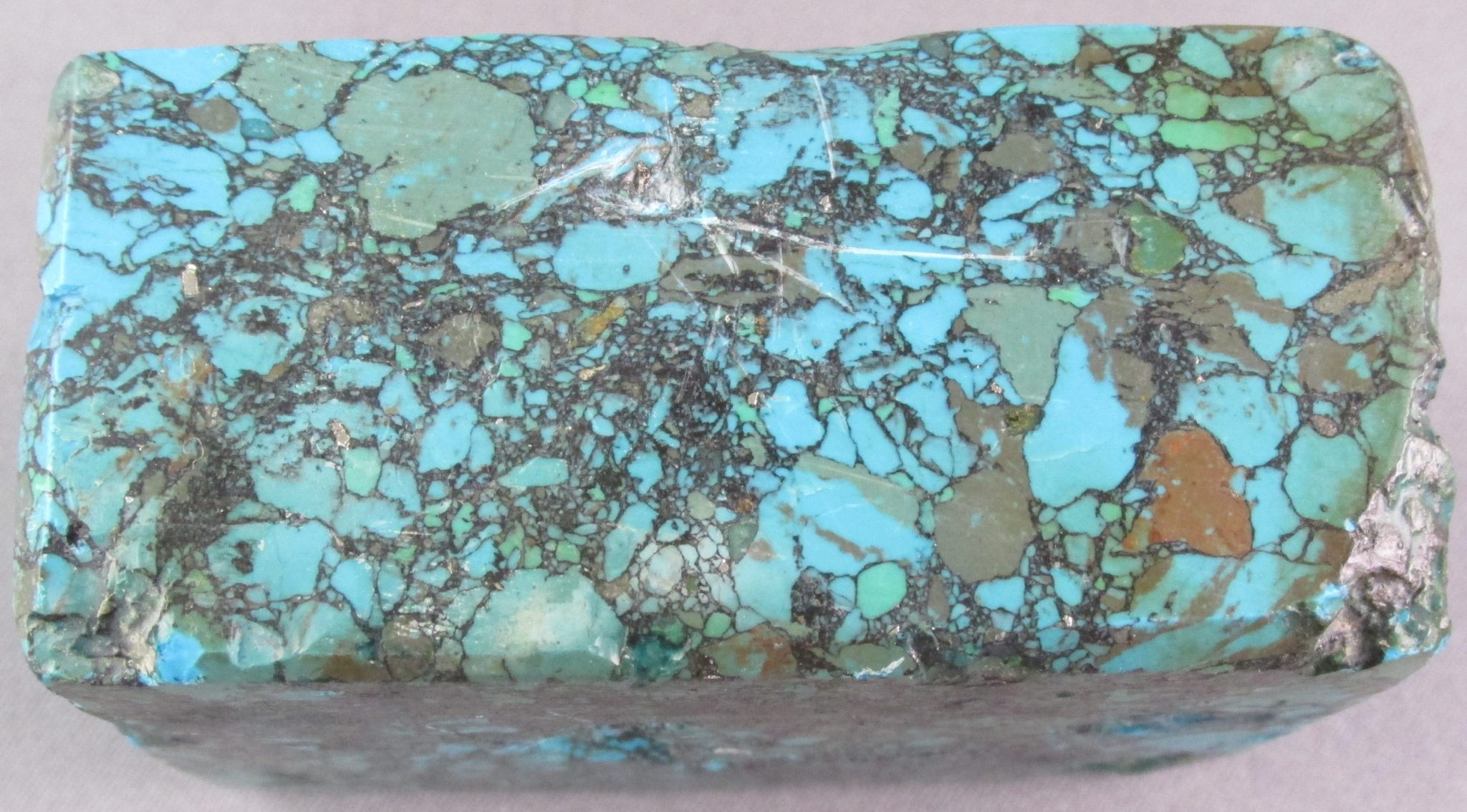
I wanted to know if there is anything that can be sprayed on dyed howlite that wont harm skin to help keep stones from bleeding?
I would spray your dyed howlite with lacquer to keep it from bleeding. You can pick up lacquer in a spray can at most hardware stores. Good luck!